The town of Tivoli lies on the slopes of the Tiburtini Mountains, along the Aniene River, which favoured the construction of limportant archaeological sites, such as the extraordinary Villa Adriana, Villa d’Este and Villa Gregoriana.

Canopo in Villa Adriana
Villa Adriana is the largest villa that belonged to a Roman emperor, a UNESCO World Heritage Site testifying to the extraordinary architectural skill of the Romans. Hadrian wanted to reproduce the places he had visited and conquered on his travels: the Great Baths and Maritime Theatre, the palaces and the Hundred Chambers, temples, gardens, fountains and nymphaea.
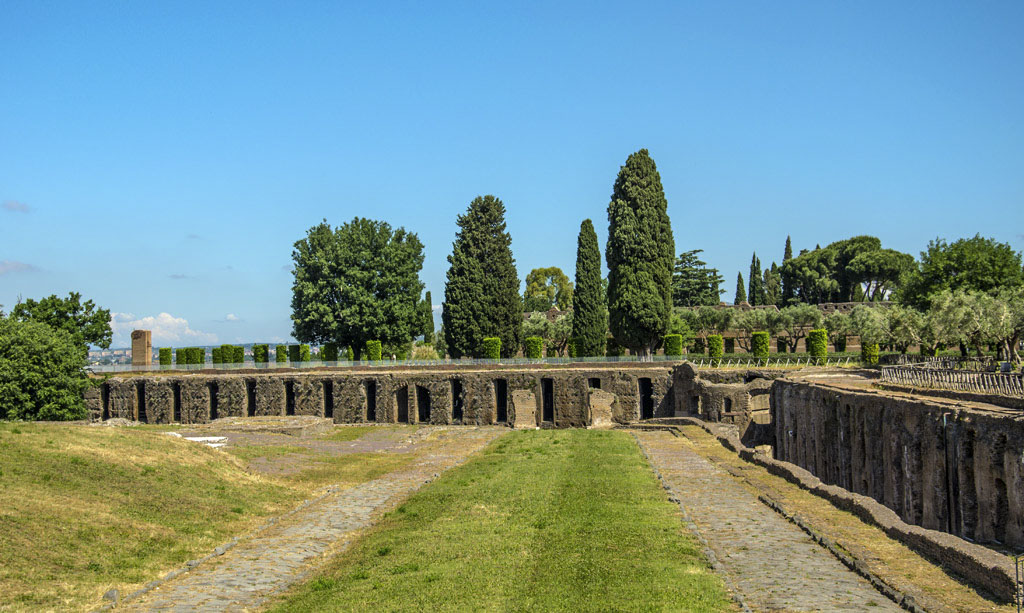
Antinoeion and Cento Camerelle – www.visittivoli.eu
In Hadrian’s Villa we find the first monument dedicated to love, the Antinoeion. This temple-tomb was built in honour of the beloved young Antinous, who tragically and misteriously died in the Nile River in 130 AD. He was the lover of the Emperor Hadrian, who divinized him after his early death.
The origin of Tivoli dates back to 1215 BC, when the Latin village of Tibur was founded. The fourth century BC defensive walls around the Acropolis and the ancient Contrada di San Paolo are still visible today. After the end of the empire, the Roman settlement turned into a partially modified medieval town.
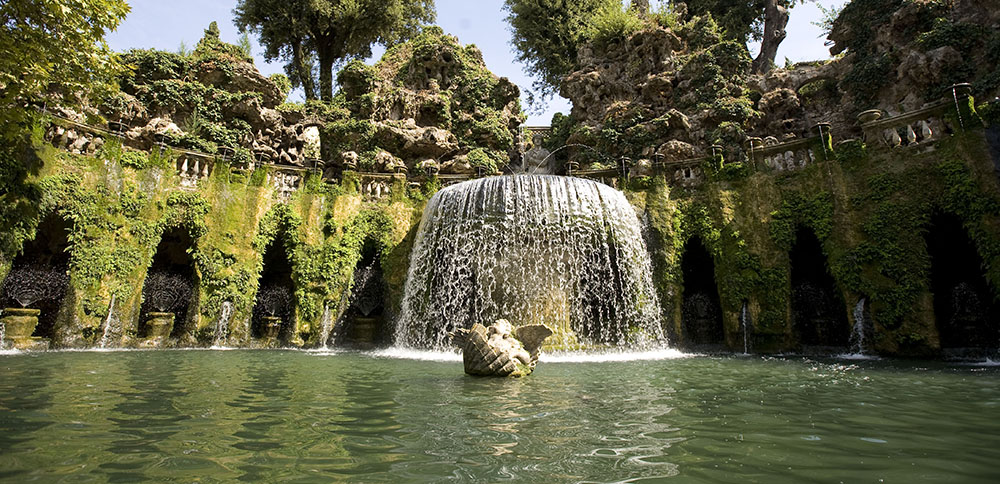
Tivoli preserved its political autonomy until the High Middle Ages, when the Roman suburban Villas fell into ruin. With the intervention of Federico Barbarossa in 1155, the town returned to its previous splendour and new city walls and strategic tower-houses were built. Then, with the appointment as Governor of Cardinal Ippolito d’Este in 1550, arose the extraordinary Villa d’Este, designed by the architect Pirro Ligorio.
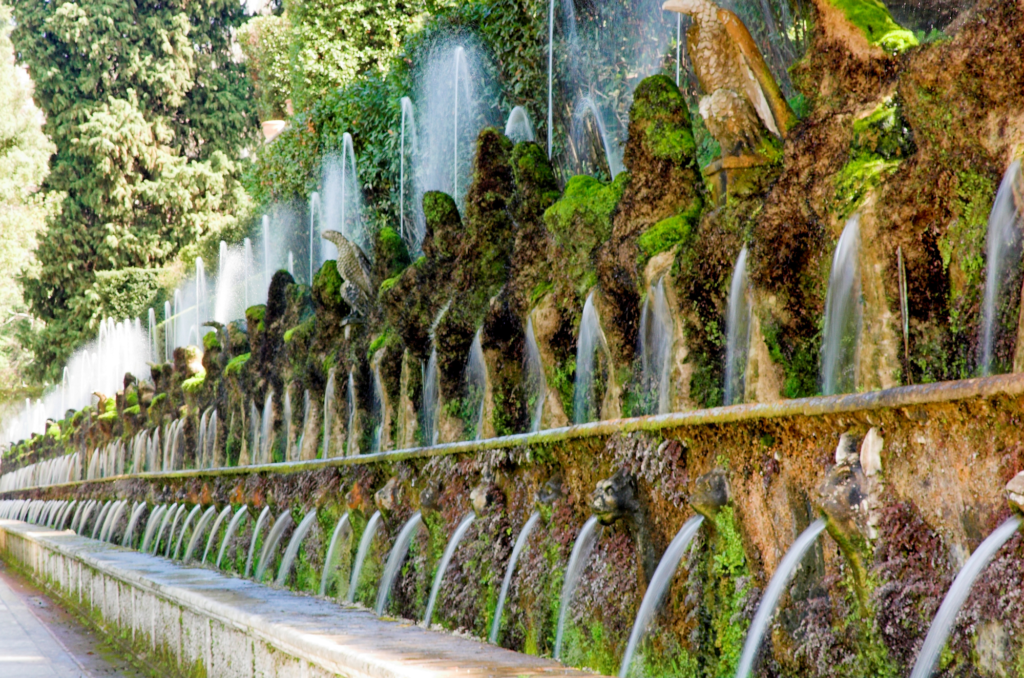
Viale delle Cento Fontane in Villa D’Este
Villa d’Este is a sumptuous Renaissance work embellished with scenic boulevards, a hundred fountains and waterfalls, nymphaeums and grottoes, enclosed in a UNESCO World Heritage Site. The Organ Fountain is a Baroque masterpiece of engineering capable of producing sounds similar to a real organ by transforming the flow of water into music. Villa d’Este in Tivoli is twinned with the Summer Palace in Beijing, two extraordinary UNESCO sites that blend nature and architecture.
Prestigious patrician palaces were built in town centre, included, at the end of the sixteenth century, the Town Hall, which incorporated medieval structures. In the Baroque era, the Cathedral of San Lorenzo Martire and the Chiesa del Gesù were erected, the latter unfortunately destroyed by an air raid in 1944.
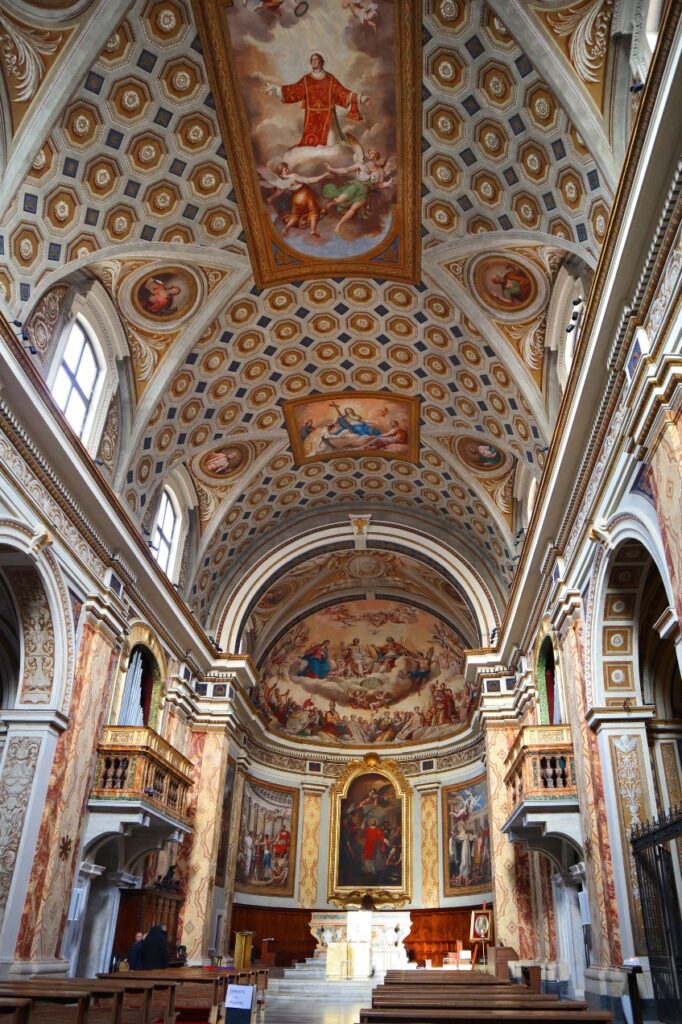
Cattedrale di San Lorenzo Martire
The Cathedral of San Lorenzo Martire was built in the 11th and 12th centuries on the ruins of the 2nd century BC basilica and again in the mid-1600s. The Cathedral of Tivoli jealously guards the Triptych of the Holy Saviour from the year 1000, the 13th-century wooden Deposition, the 47-metre-high bell tower and the baptismal font from the Romanesque basilica.
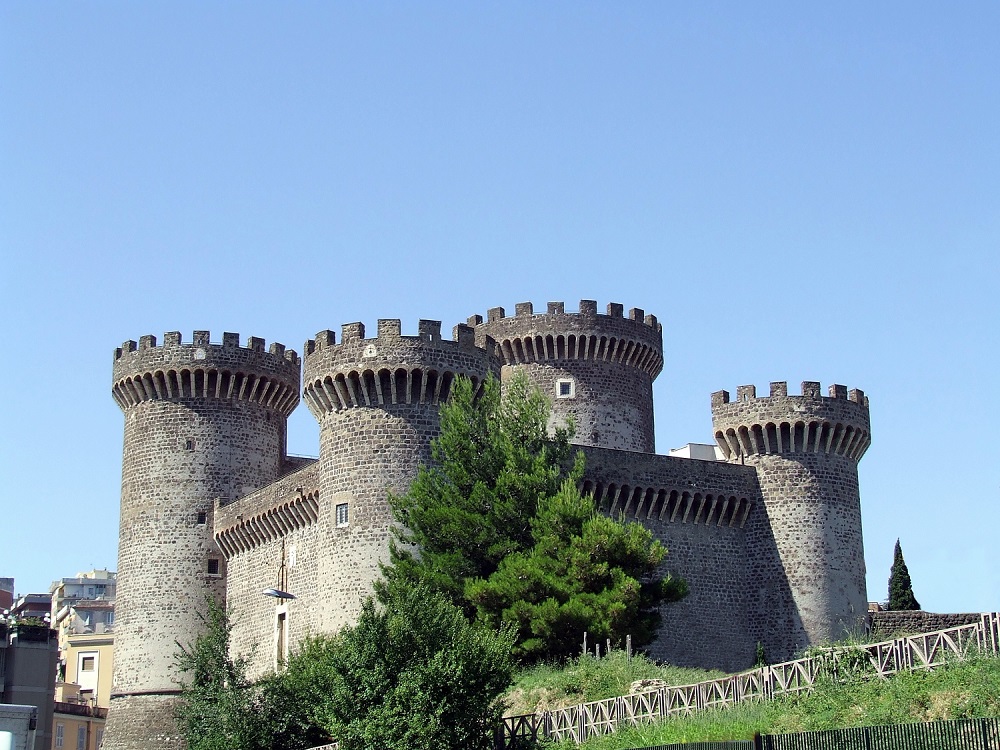
Rocca Pia
Il centro storico conserva testimonianze medievali, rinascimentali, barocche e contemporanee, come la cinquecentesca Rocca Pia, la Casa Gotica e il Ponte Gregoriano, straordinario punto paesaggistico che collega il centro alla Villa Gregoriana.
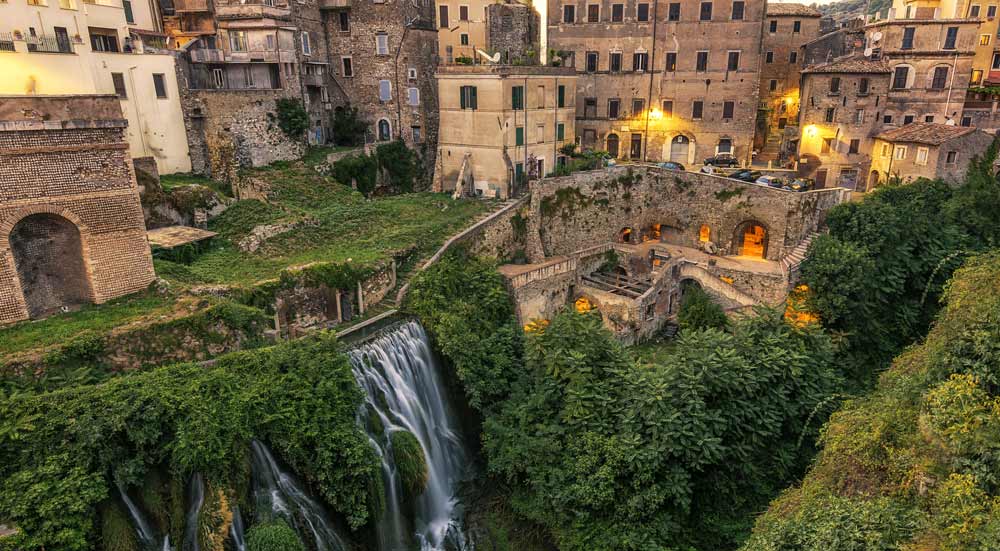
Villa Gregoriana ant the town centre
In 1826, the flooding of the Aniene River occurred. The town suffered serious damage which required the flow of the river to be diverted, thus creating the over 100 metre waterfalls of Villa Gregoriana. The Park of Villa Gregoriana stands on the remains of the villa of Publius Manlius Vopiscus in the shadow of the Great Waterfall.
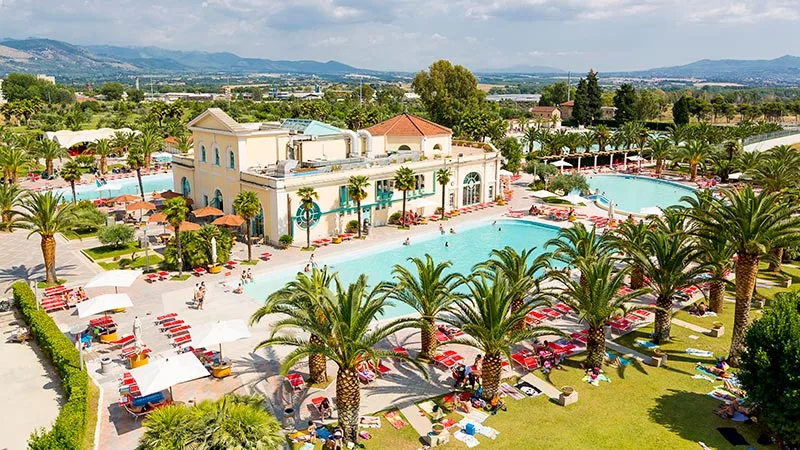
Acque Albule – www.comune.tivoli.rm.it
Water is a distinctive element of Tivoli not only in the villas and waterfalls. Bagni di Tivoli has been frequented since antiquity for its beneficial thermal waters with their characteristic milky colour.
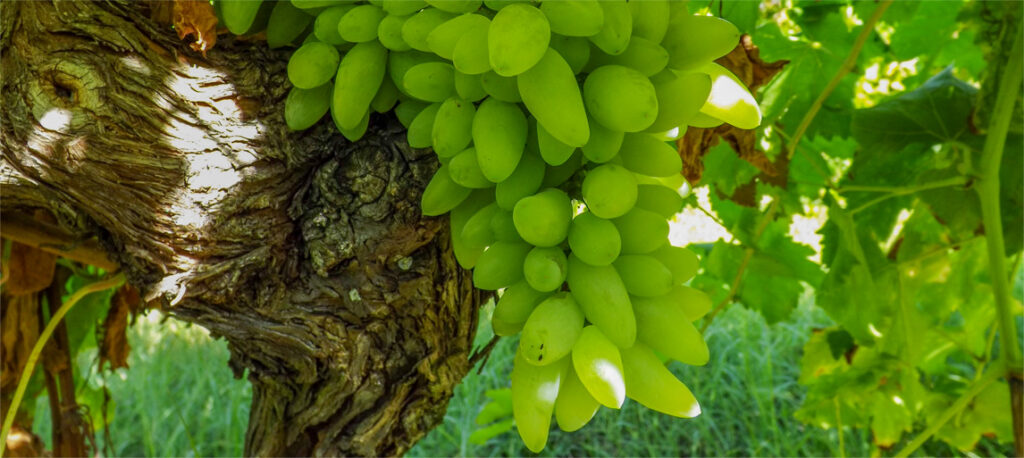
Among the typical products stands out the Pizzutello Grape, also known as horned grapes, due to its elongated oval shape. According to a popular legend, they have the power of making women’s eyes beautiful. Since the visit of Pope Gregory XVI to Tivoli in 1845, this special kind of grape has been celebrated in September at the Pizzutello Festival.
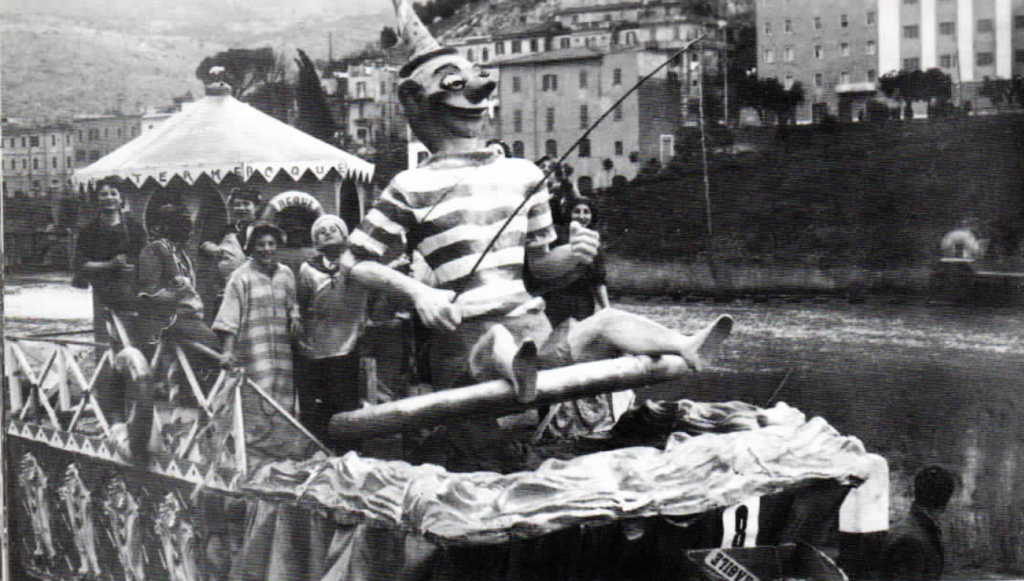
The traditional Allegorical Float Parade in Tivoli
The traditional Tivoli Carnival, listed among the most famous festivals of this kind in Italy, is an event not to be missed. At the end of the sixteenth century, Cardinal Ippolito d’Este introduced this joyful tradition, by inviting the noble families of Tivoli, and soon common people began to celebrate it with music and dances.
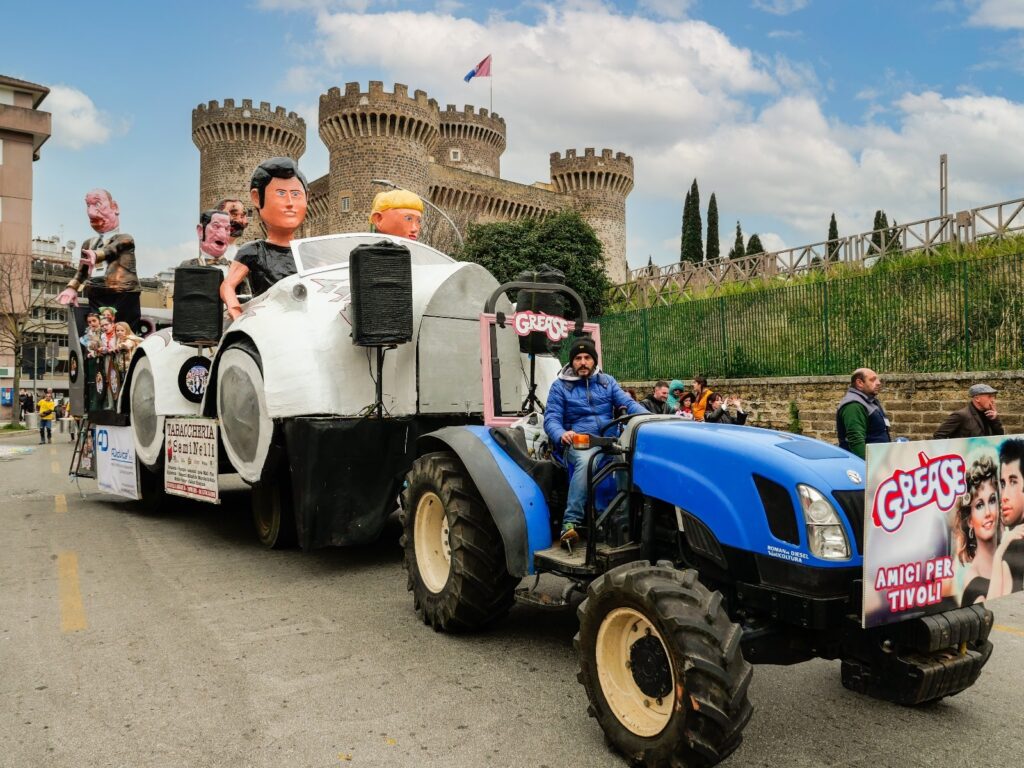
After the unification of Italy, allegorical floats carrying impressive papier-mâché characters joined the parade. The Tivoli Carnival traditionally starts on January 17, the Feast of Sant’Antonio Abate, with dances accompanied by the cheerful music of traditional Neapolitan instruments, such as the caccavelle (friction drums) or triccheballacche (little hammers banging together), and lasts until late at night.
In addition, a competition for the most beautiful float, involving the four historic districts of Castrovetere, Duomo, Santa Croce and San Giovanni, is held. Also noteworthy is finally the theatrical performance in Tiburtino vernacular at the Scuderie Estensi.
